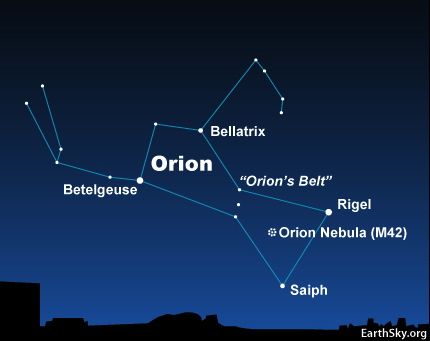One of the brightest stars in the sky, Betelgeuse, has started to dim in the night sky. (It is located in the armpit of the constellation Orion). While some scientists think the star is dimming because of "strange, stellar physics", others believe it is ready to become a supernova. The star is 642.5 light-years from Earth. That would make it become the closest supernova observed and recorded by humans. That also means that if you looked up and just happened to see the star explode tonight, the supernova you would be seeing really took place over 600 years ago and you'd only be seeing it now.
Could be worth looking up in the night sky just in case.






